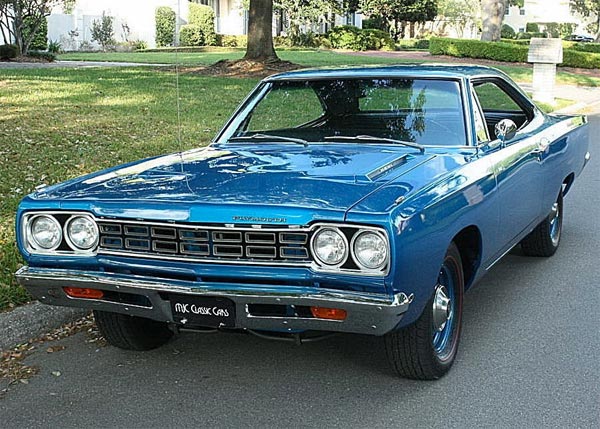Best Muscle Cars
Addressing The Negatives Of The Muscle Car

By Dave Ashton
Sigh (or big exhale sound), it seems on a regular basis muscle car fans have to defend their favourite breed of car, especially in a modern environment where the mindset is moving towards words like ‘eco’, ‘electric’, ‘hybrids’, etc. The inspiration for this article was from reading a post on titled, ‘25 Glaring Problems With Muscle Cars Everyone Just Ignores.‘
The post starts with looking at a little back history of the muscle car, more or less starting with the 1949 Oldsmobile Rocket 88, then outlining modern versions like the Dodge Challenger, Ford Mustang and Chevrolet Camaro, then on to the so-called ‘problems’.
You can follow the link above for the full explanations, but they essentially are listed as points like oil change required more often, new parts not available, needing special insurance, poor fuel economy, needing expensive fuel, no good for a daily commute, fluid leaks, bad suspension, poor brakes, expensive to buy, even one of them being manual transmission.
It’s almost like every thing that can be wrong with a vehicle is stuffed into the inherent problems of a muscle car. In some ways it even feels like the post is grasping at straws with items like – questions from fans, different to drive and hot in the summer. It doesn’t feel like a direct attack on muscle cars per se, rather than a lets pad this out to 25 points, thing.
If anyone has looked even briefly into the breed of muscle cars, they will know that the golden era was from the late 60s – 1970s, clearly now being vintage vehicles and also being in the high performance category. Being vintage vehicles in most cases, strikes out most of the caveats ever thrown at muscle cars.
We are talking about vehicles which are over 40 years old which people are still driving and maintaining today. They have the technology of the late 1960s and early 1970s. By today’s standards of technology that may seem very antiquated, especially with things like carburettors, disc. brakes, suspension, etc. Parts are available generally by OEM suppliers, apart from the rarest items, so no problem there. Therefore, if you take any technology still being used today from that time period it will inherently need extra maintenance, it goes with the territory. Which is why the constant comparison from that time period compared to now is just a null point.
Look at the engineering of any car from anywhere around the globe from that time period. Drum brakes, leaf spring suspension, carburettors. It’s ironic that for example the E-type Jaguar isn’t compared to modern day vehicles or its faults, like a muscle car would be. The E-type has a 4.2-litre V6 with 265 bhp. An iconic, great looking vehicle, but completely antiquated towards today’s standards. Show the E-type a picture of a rain cloud and it will turn to iron oxide quicker than Clark Kent to Superman.
Modern muscle
But let’s lump in modern muscle cars. Poor fuel economy, expensive fuel, no good for a daily commute, expensive to buy, even bad for the environment are some of the points listed in the article. Starting with the fuel side of things and maintenance. These are performance vehicles and like an expensive racehorse, they need more attention and care than a regular vehicle, much more for the older models. Newer cars are are better on fuel economy and have many more creature comforts making them decent for a daily driver.
in the US, registration fees are the same no matter what vehicle you have and taxes are too as long as there is no ‘gas guzzler’ tax. I would argue that modern muscle cars aren’t as bad for the environment as emissions technology and catalysts are leaps and bounds better than they were 10 and even 20 years ago. They might not be on the zero emissions or PZEV list but they are surely much better than older carburetor vehicles with no catalysts. Modern muscle cars can easily be used every day, but they are not exactly designed per se for the school run.
When you start mentioning eco-friendly vehicles, the muscle car almost seems like the antithesis or poster boy. Huge engine and low fuel economy. However, muscle cars are such a small percentage of the total amount of vehicles ever built and currently on the roads, you could probably have them all running 24/7 and they still wouldn’t even make an impact when you take into the account all the other vehicles ever made and what is pumped out by industry. Even when everything goes completely electric, the sound of a mighty, rumbling V8 engine with all its pleasing vibrations will be a nice reminder of why human beings wanted more power and performance from their vehicles in the first place.
The elephant in the room
One big elephant in the room (not the new 426 hemi…ahem), which is rarely talked about and why muscle cars can easily get a bad rap globally is ‘refinement’ perception. Generally speaking, if you’re from Europe an American vehicle is probably the last on your list. Maybe even the east and beyond. Go to Australia and they love their muscle cars, but they also had their own breed. But it’s mainly down to the refinement or image thing.
Muscle cars have traditionally been seen outside of the US as being more of a ham-fisted way to approach performance, especially in the old days. Basic engineering and if you wanted more power, stuff in more cubic inches was the perception. But this is a very generic and blase way to look at things.
Ballet and hip-hop dancing are both legitimate art forms, but Ballet is seen as the more refined. A fillet steak meal and a hamburger can be equal in quality, nutrition and taste, but the steak is seen as more refined. Some of the old Italian cars of the same period, which are so revered today are no better in technology and need just as much maintenance and breakdown even more, but somehow are seen as more refined. But the loud, brash image works to the muscle car’s advantage. It’s a bit like rock music which will always have its haters, but those who love the genre are in it for life, a dedicated, long-lived following. Other genres have come and gone, but a smaller dedicated group will always last the longest.
It’s actually quite surprising that all the vintage muscle and pony cars are as popular as ever and still being driven, arguably the most popular breed of vintage vehicle. This has to be testament to what they deliver to their owners. They will need lots of maintenance, but it goes with the territory of maintaining a vintage car. However, the benefits outweigh all the caveats and they are still some of the most raw and fun vehicles around to drive. The bottom line is, lovers or haters of the muscle car, as long as they are being talked about they will be front of mind and that’s the point to keeping the breed going.
More Muscle Cars For Sale – http://fastmusclecar.com/muscle-car-for-sale/






0 comments